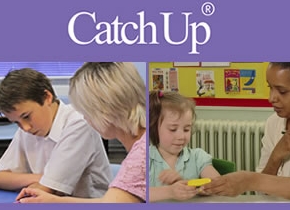
Request a full Catch Up® information brochure and details of our free information webinars
Find out more
Sometimes, trainees ask us what they should do about pupils they are thinking about starting on Catch Up® Literacy, who are already good at phonics. They anticipate that these pupils will probably score well on Assessment 2: Sight word knowledge, and so will be assigned a higher Catch Up® starting level.
The new Primary Curriculum for pupils in Years 3 & 4 says: ‘ …pupils who are still struggling to decode need to do this urgently through a rigorous and systematic phonics programme so that they catch up rapidly with their peers’, (and a similar statement is at the start of Years 5 & 6), so it’s not surprising that more Key Stage 2 (and Key Stage 3) pupils are proficient at blending phonemes to read words.
It is worth remembering that in order to achieve a tick in the ‘can read’ column in Assessment 2, the learner must have instant recognition of the word – it must be: See it, Say it. If there is hesitation, or the learner has to blend the sounds before saying the word, it is given a dot in the ‘can read’ box (indicating that the learner has some knowledge of the word but the slower process of segmenting and blending is likely to have an impact on comprehension when reading a text). Dots in the ‘can read’ column are not counted when calculating the appropriate Catch Up® Literacy starting level.
However, if the learner has internalised the blending phoneme process and is able to read the word instantly, then they deserve the tick in the ‘can read’ box and the resultant indicative Catch Up® starting level.
Dee Reid, Catch Up® co-creator, consultant and accredited trainer
Catch Up® is the working name of The Caxton Trust, a not-for-profit charity registered in England and Wales (1072425) and Scotland (SC047557) as well as a company limited by guarantee (03476510). Catch Up is a registered trademark.
The Catch Up® Web site use "cookies" to help you personalise your online experience. A cookie is a text file that is placed on your hard disk by a Web page server. Cookies cannot be used to run programs or deliver viruses to your computer. Cookies are uniquely assigned to you, and can only be read by a web server in the domain that issued the cookie to you.
Click on the different category headings below to find out more. You can change your default settings very easily. To turn cookies on, click the button to the right. To turn cookies off, click the buttons to the left. Please read our cookie policy to find out more.
Performance monitoring cookies: Google Analytics cookies (_ga,_gid) - these can last up to 2 years.
Strictly necessary cookies used by the site content management system: PHPSESSID (used to record your logged in session) and allow_cookies (used to record that the user has consented to cookies) - these are either temporary (session) cookies or expire after no more than 30 minutes and are used to provide functionality as you navigate around the site and allow you to access secure areas.